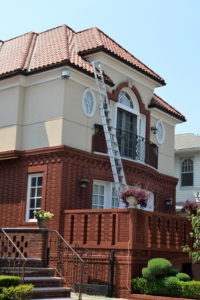It is important to highlight its preventive nature, since it can and must be carried out before the damage or loss is manifested, to take measures that prevent developing the negative potential of the dangers detected in it.
Safety Inspection is the best known and practiced pre-accident / incident analytical technique as a means of detecting hazards and controlling Risks that may affect people or property and is considered essential within any Prevention program, however simple it maybe this is it. It allows studying the security conditions in the facilities and actions in the workstations.
In addition to the main objective of the Inspections, to detect risk situations before their concretion in damages, the accomplishment of the inspection can fulfill the following objectives:
 Identify unforeseen problems during job design or analysis. Safety and Health requirements that were not taken into account during design, and hazards that were not discovered during the job or task analysis, become apparent when the workplace is inspected, and workers are observed.
Identify unforeseen problems during job design or analysis. Safety and Health requirements that were not taken into account during design, and hazards that were not discovered during the job or task analysis, become apparent when the workplace is inspected, and workers are observed.- Identify deficiencies in work teams. These deficiencies can be caused by normal wear and tear, as well as abuse or mistreatment of the equipment. Inspections help discover if the equipment has worn to the limit of its condition; if its capacity is poor or it has been used improperly.
- Identify inappropriate worker actions that may have consequences. Since inspections include both site conditions and work practices, they help detect methods and practices that have the potential for harm.
- Identify the undesired effects of changes introduced in the production process or in the materials. The processes generally change, relative to their original design. As different materials become available or as the original materials or spare parts are depleted, changes are introduced. Such changes occur gradually, and their effects may go unnoticed until an inspection reveals them.
- Propose solutions to the problems or deficiencies found. Since the object of Prevention is to avoid and Control Risks, by studying and proposing corrective measures that eliminate or minimize Risks, the ultimate purposes of Prevention are addressed.
- Demonstrate the commitment made by management. Through this activity, that encourages contact and demonstration of interest in the Health and Safety of the personnel, the management, and the senior management by engaging in inspection, detection, and correction activities are sending an unequivocal message to the workers.
Its direct purpose is, therefore, to determine the unsafe acts and dangerous conditions that are present in the execution of the work in order to correct the dangerous circumstances, eliminate the risk, or if this is not possible, control the Risk Factors to ensure that the degree of danger does not exceed what could be called the degree of risk tolerated or admitted.
